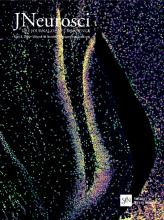
Citation :
Zhou, J., Wearn, A., Huck, J., Hughes, C., Baracchini, G., Tremblay-Mercier, J., Poirier, J., Villeneuve, S., Tardif, C. L., Chakravarty, M. M., Daugherty, A. M., Gauthier, C. J., Turner, G. R., Spreng, R. N., & PREVENT-AD Research Group (2024). Iron deposition and distribution across the hippocampus is associated with pattern separation and pattern completion in older adults at risk for Alzheimer’s disease. The Journal of neuroscience : the official journal of the Society for Neuroscience, e1973232024. Advance online publication. https://doi.org/10.1523/JNEUROSCI.1973-23.2024
Full text : Here
Zhou J, Wearn A, Huck J, Hughes C, Baracchini G, Tremblay-Mercier J, Poirier J, Villeneuve S, Tardif CL, Chakravarty MM, Daugherty AM, Gauthier CJ, Turner GR, Spreng RN; PREVENT-AD Research Group. *
published in Journal of Neuroscience, February 2024.
ABSTRACT :
Elevated iron deposition in the brain has been observed in older adult humans and persons with Alzheimer’s disease (AD), and has been associated with lower cognitive performance. We investigated the impact of iron deposition, and its topographical distribution across hippocampal subfields and segments (anterior, posterior) measured along its longitudinal axis, on episodic memory in a sample of cognitively unimpaired older adults at elevated familial risk for AD (N = 172, 120 females, 52 males; mean age = 68.8±5.4y). MRI-based quantitative susceptibility maps were acquired to derive estimates of hippocampal iron deposition. The Mnemonic Similarity Task was used to measure pattern separation and pattern completion, two hippocampally-mediated episodic memory processes. Greater hippocampal iron load was associated with lower pattern separation and higher pattern completion scores, both indicators of poorer episodic memory. Examination of iron levels within hippocampal subfields across its long axis revealed topographic specificity. Among the subfields and segments investigated here, iron deposition in the posterior hippocampal CA1 was most robustly and negatively associated with lower fidelity memory representations. This association remained after controlling for hippocampal volume and was observed in the context of normal performance on standard neuropsychological memory measures. These findings reveal that the impact of iron load on episodic memory performance is not uniform across the hippocampus. Both iron deposition levels as well as its spatial distribution, must be taken into account when examining the relationship between hippocampal iron and episodic memory in older adults at elevated risk for AD.
Significance statement The objective of this study was to map hippocampal iron deposition and its topographical distribution in cognitively unimpaired older adults at risk for AD, and its relationships to hippocampal-mediated episodic memory processes, i.e., pattern separation and pattern completion. Results revealed that elevated hippocampal iron, particularly within the posterior CA1 subfield, was strongly associated with lower pattern separation and higher pattern completion, both markers of poorer episodic memory. This is the first evidence that the spatial distribution of iron deposition in the human hippocampus has specific impacts on memory performance, and may be a more precise early neuropathological marker of insipient memory dysfunction in older adults at elevated risk for AD, but who remain clinically asymptomatic.
